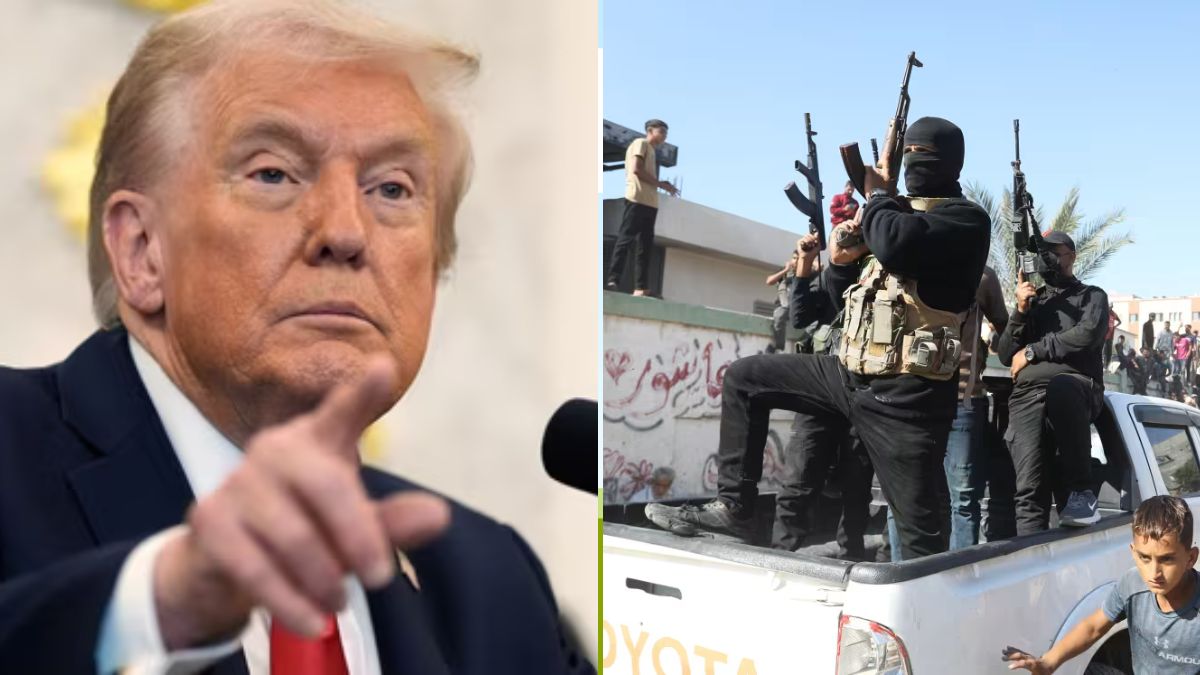Gaza ceasefire aftermath: As Trump Plan takes hold, is Hamas looking to regain control?

Hamas has signalled its intent to reassert security control in Gaza during the ceasefire.
Doha-based senior Hamas leader Mohammed Nazzal told Reuters that the group’s refusal to disarm and its recent public executions were necessary wartime measures against alleged criminals.
His remarks point clearly to the considerable obstacles facing the United States and its regional partners as they attempt to implement the Trump Plan.
Hamas versus the Trump Plan
That 20-point plan calls for disarming Hamas, removing it from Gaza’s administrative structures, and setting up an internationally backed transitional authority. Yet, Hamas has moved quickly to reassert itself across the 47 per cent of Gaza now accessible to the population.
With no viable alternative government proposed and the Palestinian Authority excluded, Hamas seems to be filling the vacuum. It has rebranded its fighters as 'Gaza Security Forces', deployed them in civilian dress, and resumed control of key urban areas vacated by Israeli forces. Israeli attempts to promote rival militias have so far failed to provide an effective alternative.
Hamas has already launched a campaign to eliminate rivals and reassert dominance. Armed raids and executions in areas such as Deir Al Balah and Gaza City reflect an organised effort to neutralise any groups that challenged its rule during the conflict.
These developments are clearly against the Trump Plan, which rules out any role for Hamas in governance—whether direct or indirect.
Hamas officials have spoken of stepping back from governance, but their actions tell a different story. New governors have been appointed to administer urban areas, and the group has resumed traffic management and other basic services. On social media, it has portrayed recent clashes with rival clans as law enforcement operations aimed at restoring order and punishing collaboration with Israel.
Hamas’ current strategy is also driven in part by the financial crisis the group is facing. Its main sources of revenue, such as taxes and border fees, were gone during the two years of war. Post-war humanitarian aid and reconstruction could help Hamas raise much needed revenue. The group is well known for diverting aid and levying informal taxes; these measures are likely to restart soon.
Support from Iran
A key source of support for Hamas could be Iran, despite its recent military defeat and ongoing domestic instability.
Reports from Israel suggest that there have been recent attempts to smuggle weapons for Hamas. There are shipments in Sudan, some reports say, that are meant to be smuggled into Gaza. Israeli security forces have intercepted several shipments in recent months.
While Hamas’ military strength has been significantly degraded with the loss of thousands of fighters and senior commanders, the group has shown signs of long-term planning. Local leadership is still in place, as they avoided direct confrontation with Israeli forces when it became strategically disadvantageous. They also have access to a significant stockpile of weapons.
Israeli officials remain sceptical of the group’s intentions, particularly as prisoner exchanges could result in the release of future leaders, as in the case of Yahya Sinwar.
Egypt has reported that Hamas has only agreed to freeze its weapons, not surrender them. Israeli leaders, in response, have made it clear that a full military withdrawal from Gaza is contingent upon disarmament.
Nearly a week after the ceasefire, it has become clear that Hamas remains embedded in Gaza’s political and security landscape. Unless the stakeholders of the Trump Plan manage to set up new governance and security mechanisms without delay, Hamas will likely continue to function as the de facto authority in Gaza and return to its past dominance, undermining hopes for a lasting resolution to the conflict.
Middle East